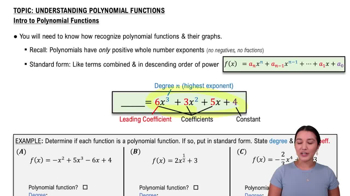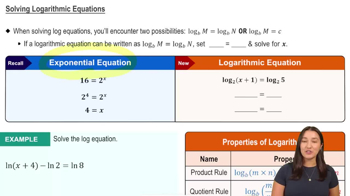Here are the essential concepts you must grasp in order to answer the question correctly.
Finding Points of Intersection
To find the points of intersection between two curves, we set their equations equal to each other. This involves solving the resulting equation for the variable, which will yield the x-coordinates of the intersection points. Once the x-values are found, they can be substituted back into either original equation to find the corresponding y-values.
Recommended video:
Quadratic Functions
Quadratic functions are polynomial functions of degree two, typically expressed in the form y = ax² + bx + c. The graphs of these functions are parabolas, which can open upwards or downwards depending on the sign of the coefficient 'a'. Understanding the properties of parabolas, such as their vertex, axis of symmetry, and direction of opening, is essential for analyzing their intersections.
Recommended video:
Introduction to Polynomial Functions
Solving Quadratic Equations
Solving quadratic equations can be done using various methods, including factoring, completing the square, or applying the quadratic formula. Each method has its advantages depending on the specific equation. For intersection problems, finding the roots of the resulting quadratic equation will reveal the x-coordinates of the intersection points, which are critical for determining where the two curves meet.
Recommended video:
Solving Logarithmic Equations
 Verified step by step guidance
Verified step by step guidance Verified Solution
Verified Solution

